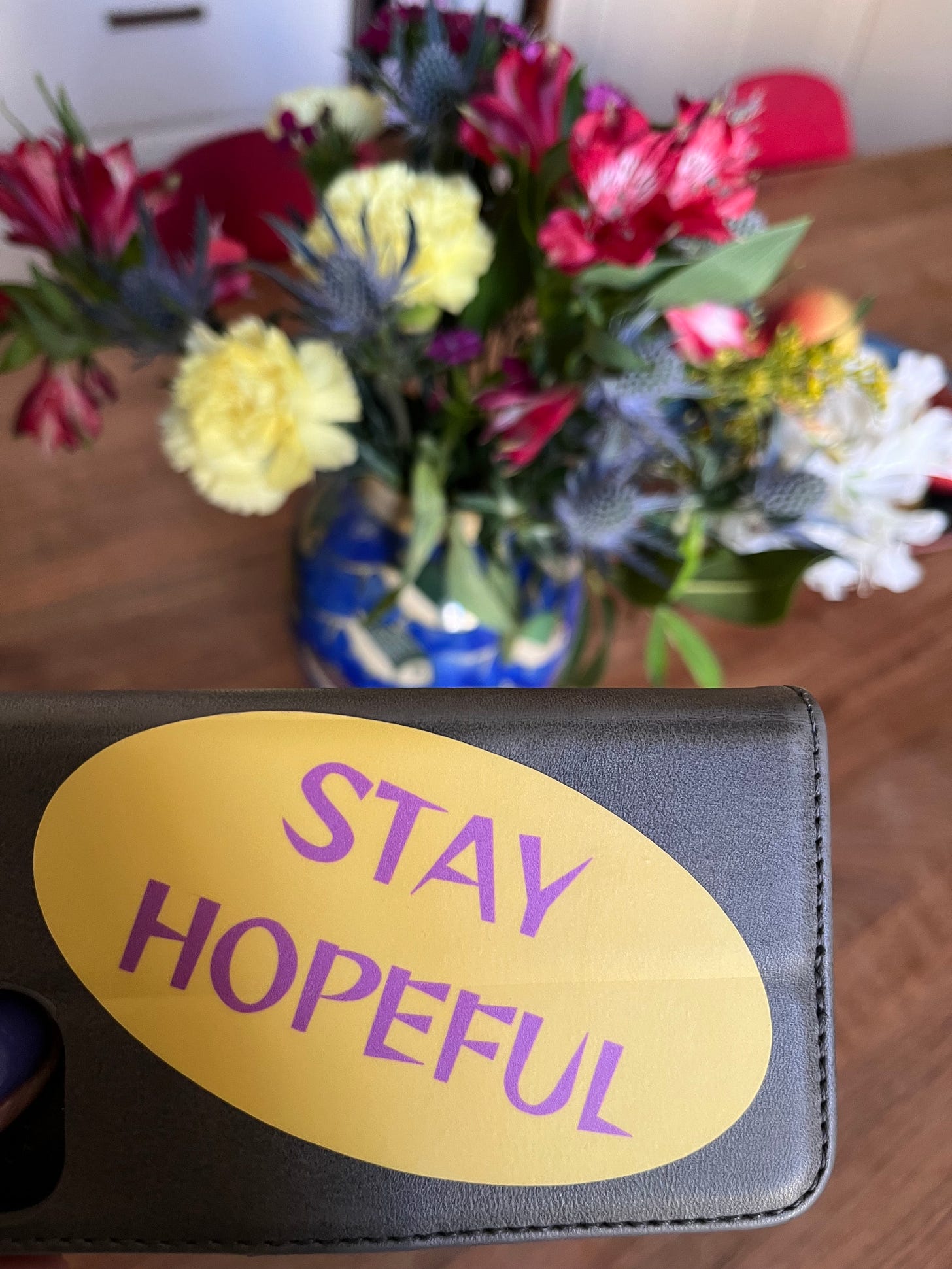I grew up in a family, and a city, obsessed by football. The fortunes of Newcastle United are a constant source of collective joy, but more often suffering. Notwithstanding the dark sides of the sport – racism, sexism, violence and dirty money – it is one of the few arenas where it is acceptable to celebrate humanity’s tribal instincts and where an outpouring of emotion is actively encouraged.
On leaving Newcastle, I discovered that such unbridled group hysteria is often sneered at in elite circles of academia, journalism and politics, where facts are favoured over fandom, rationality over ritual. Emotions are just for populists and tabloids, right?
When I joined Reuters, I signed up to a code that pledged unbiased news. Serious reporters should stick to the facts and stay cool, especially when those around us are losing their heads. If we try to provoke an emotional response, we risk straying into activism or propaganda. Many of us are uncomfortable with showing our faces on social media, where algorithms promote emotive content and encourage a personal connection with individual influencers or creators rather than trusted news brands.
But we also want to be engaging storytellers. In my consulting and teaching, I share an idea borrowed from the marketing industry to help journalists think about appealing to the “heart, mind and wallet” of their audience. I tell them it is not enough to use a bit of “heart” icing to entice readers to eat a tasteless “mind” cake of facts.
Tech hacks our emotions
One participant on a recent course, from Moldova, was sceptical. He sees the “heart, mind, wallet” approach as being potentially manipulative, an understandable reaction in a region that is flooded with pro-Russia propaganda.
Press freedom activist
is also worried about mass manipulation of our emotions by social media platforms, noting that “lies laced with anger and hate spread faster and further than facts”.“Tech enables the hacking of our biology via our emotions,” she said in a discussion on the weaponisation of nostalgia at the International Journalism Festival in Perugia.
How can we hack back? Answering the threat with facts and rationality isn’t working. Nor does responding with more fear or anger. That is why I believe journalists – and politicians – need to produce stories that contain more hope, and humour.
But first, we need to recognise that we provoke an emotional response – intended or otherwise – even with dry, factual stories, if the topic affects our lives or loved ones.
Romantics vs Rationalists
Some of journalism’s allergy to engaging with the heart is that we are still stuck in a false dichotomy between rationality and emotions that has long been debunked by neuroscience. Studies show that emotional input is vital for mental reasoning while damage to parts of brain responsible for processing emotions also impairs the ability to make decisions.
“The journalism community is quite scared of leaning into emotion and we shouldn’t be because emotions connect and create a sense of belonging and trust and it is an absolute differentiator with AI,” said Fran Beighton, head of growth at South Africa’s Daily Maverick in a panel discussion at the IJF.
Journalism needs a “Romantic Movement” to counter the Rationalists, Joshi Hermann, founder of the UK’s Mill Media, argued on the same panel.
This is not a new idea: many of the most successful media barons appealed to the heart rather than the head. It is in part a reaction to their sensationalism that explains why serious journalists feel uncomfortable about emotions.
It shouldn’t have to be a choice. The “audience needs” model popularised by
at the BBC has encouraged many media organisations to consider some of the emotional needs of their audiences, alongside expectations for facts and context.I asked journalists on one course to put green stickers on the audience needs they are serving well, like “update me” and “keep me on trend”, and red stickers in areas where they need to do more like “inspire me” or “entertain me”.
This model helps journalists to see that they are avoiding positive emotions. But it does not account for negative emotional reactions, including to supposedly neutral factual content. For example, when I was a defence correspondent two decades ago, I wrote lots of pretty emotionless articles about Germany scrapping military service. But nowadays, I can’t read an article about the possible return to conscription in the UK or Germany without worrying about the future of my teenage sons.
Fear and anger monetised, also by liberal media
Research shows that the sentiment of mainstream US news media headlines has become gradually more negative since 2000, with the proportion of headlines denoting anger and fear almost doubling in frequency. And while this study shows that right-leaning media has been consistently more negative, the negativity of headlines in the left-leaning news media has increased sharply since 2013.
Has objective reality really become twice as bad in the last decade? Admittedly, the climate disaster is accelerating and wars in Ukraine, Gaza, Sudan and Yemen are grim, but 20 years ago the world was still reeling from 9/11 and wars in Iraq and Afghanistan were the main focus of outrage. And since then global poverty has decreased dramatically and life expectancy has increased, while cheap renewable energy is poised to upend economics and help fight climate change.
“If it bleeds, it leads,” is not new, but what has changed is that the attention economy has hypercharged the monetisation of our innate negativity bias.
Former journalist
co-founded AI company Overtone to dig deeper into whether stories are largely angry, sad, fearful, happy, funny or hopeful. He found an increase in the "sad" tone of the most read US articles in recent years.Most existing sentiment analysis only gives a positive or negative rating for content, Brennan said, which can lead to counterintuitive results. So a standard model would rate a headline like: “Drug company slashes cancer risk” as negative as it features the words “cancer” and “risk”. But Overtone’s model would rank that text as “hopeful” because the AI is clever enough to sift this.
Overtone analysed coverage ahead of the US election from both sides of the political spectrum and found that liberal-leaning sources, like The Guardian and Huffpost, had a much angrier tone than that of the conservative media, including Fox News.
Perhaps the angry tone in liberal media is understandable given the threats to the liberal world order, and the state of the media business. But the relentless negativity of the news, and politics, is also causing many people to switch off completely as I wrote in my last blog.
What makes people laugh or cry?
FT Strategies, the consulting arm of the Financial Times, has helped several media companies to connect with their audience by injecting more positive emotions into their stories. FT Strategies found that at Serbian daily Blic, 80% of poorly performing articles had negative emotions in the headline. By giving stories a more positive framing, average reads rose by 4.9 times.
Meanwhile Swiss farming newspaper BauernZeitung managed to drive higher page views, longer attention time and new visitors to its site by writing more emotion-driven articles. One inspiring recent story that I spotted among most-read articles on the site is about a Nigerian prize winning cheese maker in the hills near Zurich.
To engage readers, what matters most is whether the emotion triggered by an article is active, rather than whether it is positive or negative, according to Fran Beighton of Daily Maverick. She says that fear and hope together pack the most powerful punch.
“People should be writing with the intention, ‘what is the emotion I want people to feel when they read this?’” she said.
Journalism must move away from metrics like clicks and page views and instead find out what is making people laugh, cry or have a deep conversation, according to
, co-founder of fast-growing Danish media start-up Zetland. Korsgaard previously worked on an Obama campaign, where she learnt we need to “Tell the story of why you care, why we should care and why we should care now!”“Knowing your heart is a virtue”
A story which brought me to tears recently was run by the inspiring Prison Journalism Project from Derek Lecompte, who has learned to love after 25 years in prison,
“To express love in prison usually is taken as a sign that someone is weak. Or, at minimum, they are exposing weakness. That is why most people succumb to the hardness and coldness of incarceration. But that is not the case for all of us. Some of us become soft,” Lecompte writes.
“To know your heart is a virtue. To be emotional and feel sensations that are soul-opening means you are still connected to life and not merely waiting on death. It’s a strength.”
This debate about emotions goes well beyond journalism: many progressives kid themselves they are more rational than their opponents, even if we can be just as tribal and blinkered. That self-belief can blind us to the divisive nature of our own biases, anger and negativity.
Liberal discomfort with emotions leaves us powerless to respond to the autocrats who excel at stirring up the masses with fear and anger. And fighting back with our own fear and anger, as has become more common in the liberal media, isn’t working either.
I admit this piece is perhaps too rational. But, as Fran Beighton advises, the emotions I want you to take away from it are hope, perhaps tinged with a bit of fear. That combination is something every football fan in Newcastle knows well. Nowadays, I find it hard to cheer on a side that might finally be on the brink of major success largely due to its sponsorship by Saudi Arabia.
But when it comes to the future of journalism, the new Romantics who are building emotions into their business models provide hope for the future of the industry.
What I am reading:
Outline by Rachel Cusk - I have to admit I bought this book because of the cover featuring a picture of a shell standing upright in the sand. It is hard to categorise as the book is more a collection of conversations than a classical narrative, but I was completely hooked from the beginning and found myself copying down chunks of text like this one: “For many women… having a child is their central experience of creativity, and yet the child will never remain a created object.” I am looking forward to reading the rest of the trilogy.
South by Colm Toibin - The story of an Irish woman who flees 1950s domesticity to pursue life as an artist in Barcelona. Sparsely drawn, it is a tale of love, exile and home that digs into Spain’s violent past and also explores creativity and madness.









Thanks a lot!
Enjoyed reading your thoughts on this. I wonder how long it will take orgs to move away from clicks, etc. The smart ones have already moved away! It usually takes a few successful news organisations to lead the way, like they did for newsletters. Now every newsroom has several newsletters, despite not getting a good readership nor revenues!